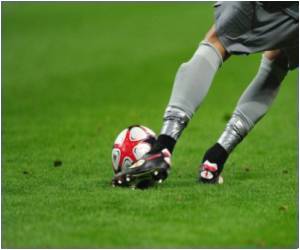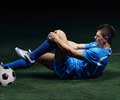
The study, led by Joseph J. Crisco, professor of orthopaedics in the Warren Alpert Medical School of Brown University and director of the bioengineering laboratory at Rhode Island Hospital, documented 286,636 head blows among 314 players in the 2007-09 seasons. Crisco said the new data on the magnitude, frequency, and location of head blows amounts to a measure of each player’s head impact exposure. Ultimately it can help doctors understand the biomechanics of how blows to the head result in injury.
“This allows us to quantify what the exposure is,” Crisco said. “It is the exposure that we need to build upon, so that we can then start understanding what the relationships are with acute and chronic head injury.”
Concussions and other head injuries have become a source of elevated concern in football and other sports in recent years, with various leagues revising policies to protect players better. In part based on seeing this new data, said Robin Harris, Ivy League executive director, league officials announced earlier this year that full-contact practices would be limited to two a week.
The study appears online in advance in the Journal of Biomechanics.
It documents the nature of head blows by player position. Players on the three teams wore helmets equipped with wireless sensors that measured acceleration in various directions. That data allowed the team of researchers from Brown, Dartmouth, Virginia Tech, and sensor-maker Simbex to discern how hard the hit was, how often each player was hit, and where on the helmet they were hit.
Advertisement
Doctors worry not only about hit severity, but also hit frequency, because repeated head impacts may cause “subconcussive” neurological damage over time.
Advertisement
“It will allow us to begin to understand how to control the exposures,” Crisco said. Controlling head impact exposure is critical, he added, because there are currently no treatments for acute or chronic brain injuries, and helmets cannot prevent injuries for all players in all situations.
One possibility could include rule changes. Another could include designing helmets for specific positions.
Crisco and his colleagues are now analyzing data about concussions during the three seasons to determine how and whether head impact exposure is associated with injury. He recently co-authored another paper about male and female collegiate hockey players, which reported that although women were diagnosed with more concussions, they sustained fewer and less severe head impacts.
Although Crisco’s analysis is still underway, his insights into head impact exposure led him and co-author Richard Greenwald, a Dartmouth engineer, to write a commentary earlier this year in Current Sports Medicine Reports, in which they argued that intentional use of the head in sports must be curbed.
“We propose the adoption of rules — or in some sports, we champion the enforcement of existing rules — that eliminate intentional head contact in helmeted sports,” they wrote. “When coupled with education that leads to modified tackling, blocking, or checking techniques, these rules will reduce head impact exposure and have the potential to reduce the incidence and severity of brain injury.”
Source-Medindia









